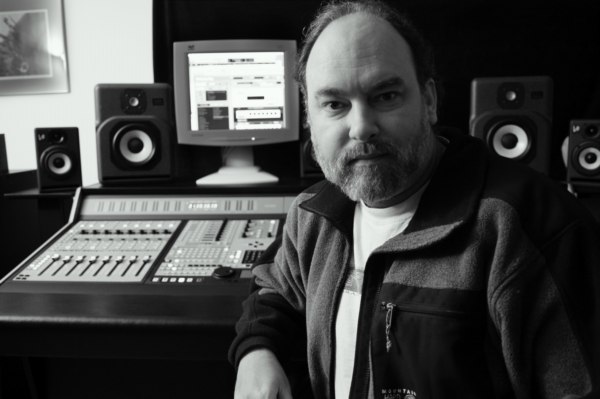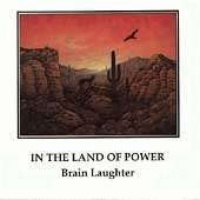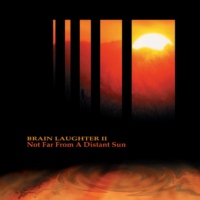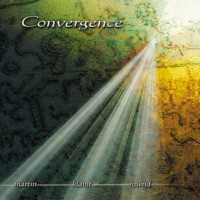|

First of all, what is the Spotted Peccary label all about, how was it established? How hard was it in those days to start from scratch?
Spotted Peccary is an artist-owned label dedicated to the presentation and promotion of mostly instrumental electronic/acoustic music. By that, we mean music that is created through the use of electronic instruments or electronic derived tonalities and augmented with acoustic sounds or instruments, either melodically, or texturally.
Spotted Peccary started in the mid-1980’s in Tucson, Arizona. Since the latter 1970’s my friends and I had been listening to ambient and electronic forms of music including Carlos, Horn, Jarre, Pink Floyd, Schulze, Gleeson, Yes, Kitaro, Eno, and others. We had been introduced to friend’s synthesizers and been experimenting with our own limited recordings, and ambient acoustic textures.

So by the mid-1980’s we had created the basis for what was to become Brain Laughter, but it was the final release of the cd, “In the Land of Power”, in 1989 that truly propelled us toward a future as a label.
At the time, we just weren’t hearing music like what we were doing, and didn’t think any label would be interested in our music – especially the more ambient material. So this left us with the option of creating our own label. This wasn’t about keeping control of the art, or trying to make money. We just thought we couldn’t get anyone to buy our little piece of art, unless we formed a label and tried to actively sell it. So from 1986 to 1989 we formed a label, released our first cd, and then tried to figure out how to sell it. We didn’t fit into New Age and we didn’t fit into Rock. Slowly we would sell a few copies here and there. It was very difficult, especially considering how expensive the equipment was at the time, not to mention the cost of manufacturing a in those days.
We quickly started to realize that to be successful as a label, we needed to release material from other artists, and build a catalogue. New personalities got involved and we started to produce more new releases. By the time the second Brain Laughter release came out in 1995, we had defined a sort of direction that the label would follow, with the releases by Greg Klamt, our early compilation with a number of artists, Deborah Martin, and Jon Jenkins and Paul Lackey.
What kind of artists can be found on the label? Can you give a brief description of the artists & the music you’ve published of them?
Our focus has always been on mostly instrumental composers working with electronic and acoustic elements that define a sense of spatial dimension while sculpting a story, or mood, or maybe even more abstract, an impression of an aspect of life. Sometimes the original acoustic source material will be sampled or manipulated electronically, but the resulting feel is still primarily an organic one.
We have always viewed electronic and acoustic tones as just a variety of sonic colours, with no real attachment to one or the other. We are fortunate to work with some awesome artists that have been significant contributors to this neo-electronic/acoustic style of music.
Michael Stearns, Erik Wøllo, Deborah Martin, Jon Jenkins, and David Helpling have certainly been some of our more recognized composers, but all of our artists continue to distinguish themselves with highly crafted compositions.
The list of artists continues to grow as we discover great new material by artists that we feel should be better known.
One peculiar project on the label is Brain Laughter. What was this project like, and will there be another album sometime?
Brain Laughter was the original collaboration that started Spotted Peccary with the release of “In the Land of Power” in 1989. There was a follow-up to this release called “Not Far from a Distant Sun”, which was released in 1995 that was mostly comprised of two of the original members, myself and Debra Musgrave, with contributions by Steve Roach and other artists. The focus of these projects was to create a “grand collaboration” of artists intent on exploring musical impressions of the Sonoran Desert in the Southwest region of North America.

In the early days, we would blend flutes and guitars, all with very long reverbs and delays, with voice sounds and percussion and noises, creating an ambient atmosphere of “space” music, as it used to be called. When we finally acquired our first synthesizer and sequencer, we would experiment with adding the synthesizer into these sculptures.
By the mid-1980’s though, the emphasis shifted more into the keyboard/synthesizer arena, and as we added to the electronic arsenal, and the tools for sequencing became more sophisticated, our music became more structured around electronic compositions.
We are currently looking at releasing a collection of pieces from both of these releases as one final statement, thematically speaking, that will conclude this project, at least for now. It’s possible that something new would be started in the future, but not probable. Brain Laughter was from a time when that level of collaboration was more possible.
It seems to me we haven’t heard from quite some musicians in a long time, like Greg Klamt, Mark Rownd or J. Arif Verner?
We have just released a new title from J. Arif Verner called “From a Distant Horizon”. It’s similar in style to his previous releases, “Through the Timeless” and “A Vision Beyond Light”, but with more focus. He’s also finishing a new collaboration with Deborah Martin, which is due out next year. Greg Klamt and Mark Rownd also collaborated with Deborah Martin on “Convergence”, but have not released anything since then. Greg Klamt has been working on some new material, so we’ll probably hear something from him in the near future.

A few years ago Spotted peccary started the Wanderings series. What is it about and what are the plans for it? Will there be more sub-labels?
We added the Wanderings imprint to Spotted Peccary Music to expand our horizons, so-to-speak. It has given us more latitude in what we release, as far as the content is concerned. Initially, we released work by Erik Wøllo and Green Isac, and more recently, have added Between Interval (Stefan Jönsson) to the growing roster.
Wanderings titles are a bit more eclectic than Spotted Peccary, but still fall generally under the “ambient/atmospheric/electronic” category. Recently, we launched yet another imprint, O3E, which for similar reasons, further expanded our possibilities.
O3E’s future is designed for releasing music that is perhaps peripheral to this “ambient – electronic” music. We are planning to include new classical and new rock and other genres that exist outside the realm of what Spotted Peccary currently encompasses.
That’s our hope, but we’ll see where it takes us.
What’s your opinion of current electronic ambient music scene? What role does Spotted Peccary play within it, how does it distinguish itself from others?
These days there seems to be some confusion or debate about the name “ambient”, but for us, this form – as a structure of music, apart from any references to electronic or acoustic sources – is clearly represented by the works of Eno, Satie, Schulze, Roach, Reich, Debussy, and others.
Ambient denotes space, either space between the notes, or space between the beats. But it also includes space in concept and theme, and possibly even the spatial relationship of the music to the environment. Like most things abstract, maybe the depth of this music is lost on the majority of listening audiences.
So we’re trying to discover better ways to encourage that kind of listening, not only to the music on Spotted Peccary, but also to the many artists’ work that expands on this form. Electronic ambient has become somewhat derivative of itself for the most part. There are a few artists like Steve Roach or Michael Stearns who continue to push the boundaries into new territory. Spotted Peccary’s role is to try to encourage this originality and creative approach.
Can you tell a bit about the Spotted Peccary Studio?
Although the workflow for each of our artists is different, at Spotted Peccary Studios, we use a Mac-based system, primarily with Pro Tools HD and Digital Performer, along with various hardware synthesizers and software plug-ins, and outboard effect processors.
For acoustic recording, we use True Systems microphone preamps with Neumann and B&K microphones. Monitoring is on KRK speakers.
So what plans does the label have for the near future?
Our plan is to grow and strengthen our abilities at continuing to represent music and ambient music for the sake of the arts. We believe that music is art and that it should be heard, as its own form, and as something that makes a difference in people’s lives.
So far we’ve seen that often the music needs to be presented in some context, like a down-tempo or chill environ, or associated with a strong visual presentation, either fixed installation or film related.
But even the most subtle of ambient music can be ultra powerful, if audiences can be encouraged to focus and listen. We are currently expanding Spotted Peccary into the Portland, Oregon community, looking to create some sort of an environment there that will present this music in a powerful way, and of course, provide a venue for a “behind-the-scenes” look at the process of creating this music.
We have identified the Portland area as a community that seems to be a bit more progressive in regards to the arts, and receptive to what we are up to.
We have just recently opened an office in the UK with the intent of expanding awareness of the artists on Spotted Peccary throughout Europe. We have many new releases that we are currently working on in addition to all this expansion.
Basically, we’re just very busy getting the word out about this kind of music, and discovering new ways to express it as an art form.
Website: www.spottedpeccary.com |




